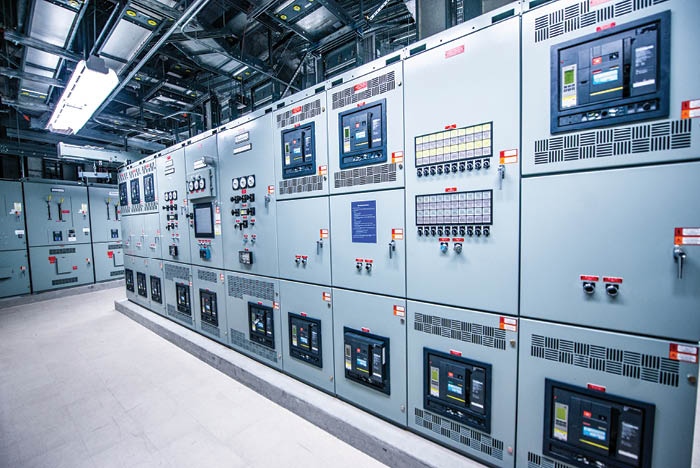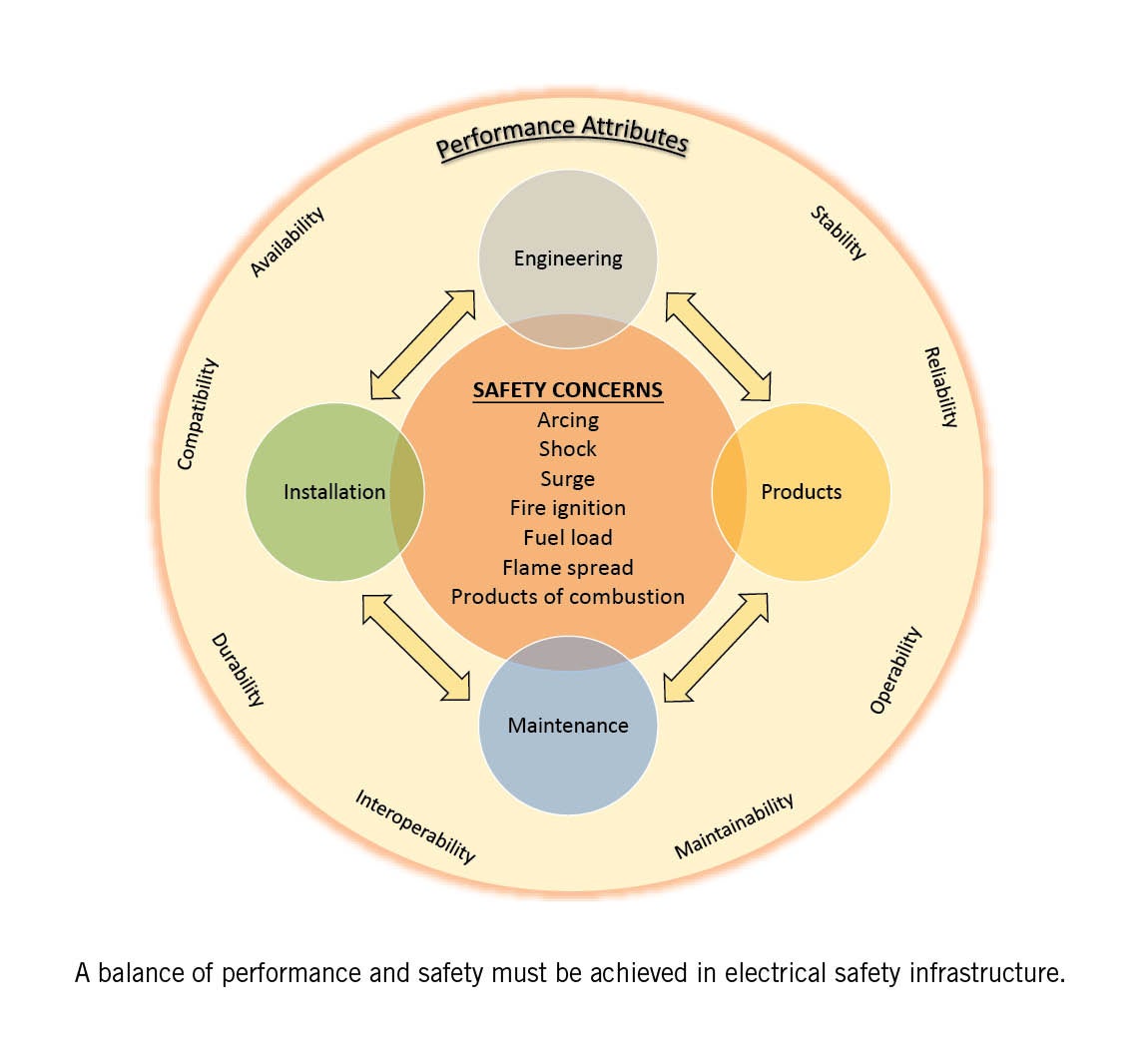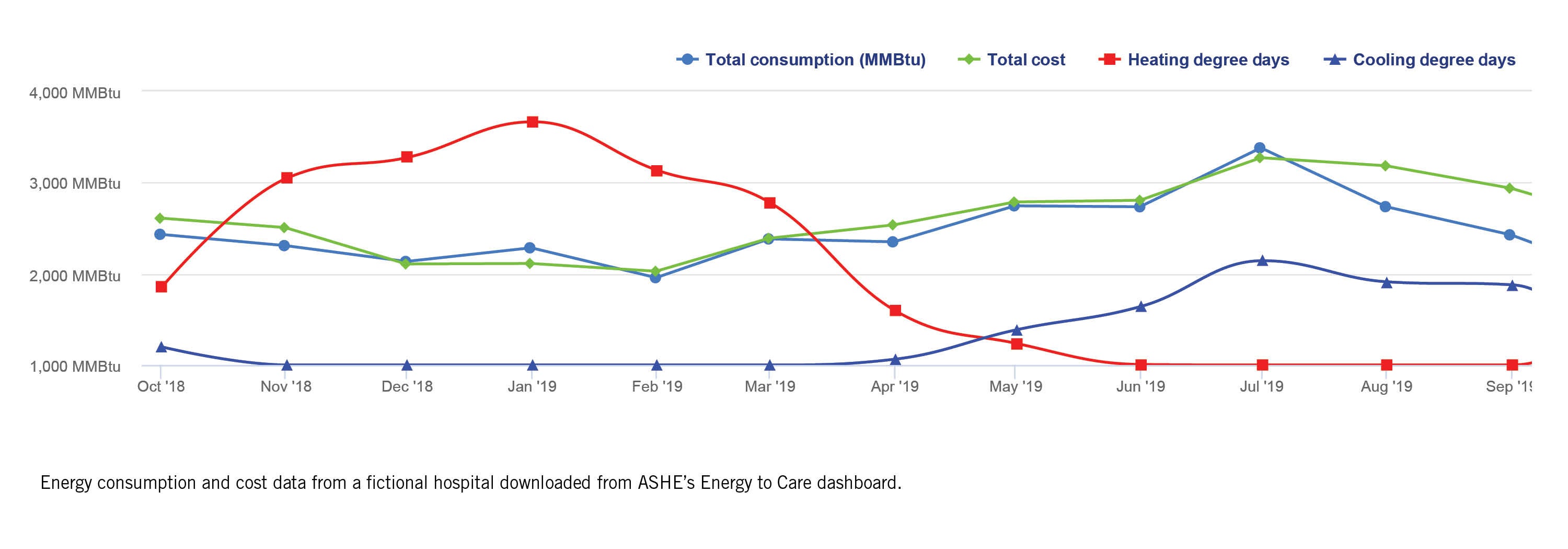Balancing safety and efficiency

As the interest in energy efficiency swells and electrical load usage spirals downward, the relevancy of load growth assumptions with spare capacity will be called into question.
Image courtesy of ASHE
The American Hospital Association (AHA) indicates that there are 6,146 hospitals in the United States. Each of these facilities is required to maintain a safe environment that is on par with competent health care.
Those charged with protecting health care properties and personnel must also keep an eye on the bottom line as part of the health care paradigm shift.
So, is it any wonder that two critical priorities for health care facility managers these days are improving safety and adopting energy-efficient approaches?
Regulatory disconnect
Health care facilities managers around the world are well-apprised of codes and standards and the role they play in establishing a solid safety foundation. They are well-versed on the National Fire Protection Association’s NFPA 99, Health Care Facilities Code, and NFPA 101®, Life Safety Code®, given that the Centers for Medicare & Medicaid Services (CMS) require hospitals, transplant centers, critical access hospitals and long-term care facilities to evaluate their emergency and standby power systems.
Specifically, building systems must be inspected, tested and maintained in accordance with the 2010 edition of NFPA 110, Standard for Emergency and Standby Power Systems, as well as the 2012 editions of both NFPA 99 and NFPA 101.
Health care facility challenges can be unique and complex when compared with those that arise in other commercial buildings. For example, health care facilities demand 24-hour operation. They are held to stringent regulations and standards of care for buildings and require a high level of energy usage.
Although a commercial building energy consumption survey (CBECS) shows that health care facilities only account for 4.8% of the total number of commercial buildings in the United States, these buildings consume 10.3% of the total energy in the commercial sector. Furthermore, the average energy intensity of U.S. hospitals is 2.6 times higher than other commercial buildings.
To help improve sustainability in facilities, health care officials now have various energy management resources that capture important data and generate analytics. For example, the American Society of Healthcare Engineering’s (ASHE’s) Energy to Care program offers tools to access, monitor and analyze energy usage data so that health care authorities can make more informed decisions.
However, even though innovation is proceeding at a breakneck pace and the world is increasingly becoming more data-rich, regulatory bodies are often challenged to keep up. The lack of understanding about emerging trends and technologies may lead to unsubstantiated health care regulations that not only increase financial burdens but do very little to improve overall safety.
With hospitals typically operating at a 5.5% operating margin, facilities managers may be wary of purchases and protocols that increase operational costs with little impact on safety; they may also have reservations about legal, cultural, political, social and privacy challenges. Despite questions and concerns, health care facilities managers are increasingly collecting, processing and delivering data, as well as analyzing key metrics.
Role of data
To help navigate the new normal, The Fire Protection Research Foundation (The Research Foundation), the research affiliate of the NFPA, began a research program around electrical circuit data collection in 2016.
The overarching research goal was to analyze electrical load data in health care, business and educational occupancies, and provide the NFPA 70, National Electrical Code® (NEC®), code-making panels with the most recent, relevant information for the standards development process.
Sponsored by a consortium of universities throughout the U.S., the initial project, “Evaluation of Electrical Feeder and Branch Circuit Loading: Phase 1,” was published in January 2017. The results of that study can be found at the Foundation's website.
The NEC is considered the benchmark for design and installation of electrical equipment around the world. In recent years, the scope of the code has evolved further to consider “safety by design.” NEC technical committees and task groups are also recognizing, addressing and becoming more responsive to the growing appetite for energy conservation.
Given that the NEC serves as the backbone of the regulatory and safety infrastructure for electrical systems, it is critical that NEC technical volunteers consider new technologies, emerging trends, lessons learned and building design to ensure that the guidance remains the undisputed gold standard. (Additionally, keeping current on insights, incidents and innovation is why all NFPA codes and standards are typically updated every three to five years.)
Validated data, the byproduct of all these new digital and technological advances, also has become more prevalent in the code development process. Historically, electrical data collection or the availability of relevant data has been lacking and, except in limited situations, NFPA technical committees have struggled to identify and investigate any data that would substantiate code changes, particularly for the NEC.
With the Internet of Things, new digital life safety solutions, electrical metering equipment and remote monitoring technology, facilities managers are learning more about their buildings’ energy consumption and the efficiency of their building management systems these days.
Data from these innovations is informing day-to-day operations as well as strategic decision-making. Electrical data is now being considered when regularly debated technical requirements (e.g., the design of feeder and branch circuits, surge protection, arc fault circuit interrupters or ground-fault circuit interrupters protection, and electric shock drowning) are discussed during the standards development process.
The next step in the quest to better understand electrical data in various occupancies took place in November 2019, when The Research Foundation hosted an Electrical Data Summit. The goal of this program was to evaluate how emerging technologies and data-driven solutions can impact the electrical safety infrastructure through electrical codes and standards. The focus was on the general role of data in the electrical world.
Discussions emphasized that data should inform and support decision-making, not actually make decisions; the logic that prevailed was that a vision for tomorrow is needed to ensure that there are no changes that could lead to disasters. Insights can be found on the NFPA website.
Sustaining interest
Long before people were considering electrical systems innovation or the existence of data, there was an interest in making buildings more sustainable. In 1975, the U.S. government passed its first energy policy act. Development and adoption of energy conservation codes for buildings followed and, since that time, government entities have played an active role in establishing minimum efficiency requirements for appliances and equipment.
Encouragement from electric utilities, government entities, product manufacturers and financial incentives also have spurred a wave of new commercial building designs and retrofits that prioritize energy efficiency.
From an environmental perspective, sustainability is becoming an increasingly important issue in the design of a building’s electrical system. In this context, oversizing electrical equipment can arguably be viewed as wasting resources while “right-sizing” electrical equipment and systems may provide cost benefits and potentially minimize electrical safety hazards posed by oversized equipment.
Unsurprisingly, energy codes have driven down the electrical demand presented by end use equipment in hospitals and other occupancies. Today, equipment supplying power to feeder and branch circuits often are found to be larger than many deem necessary, exposing personnel to potentially greater hazards, like arc flashes.
Over the years, questions have been raised about whether the design requirements for feeder and branch circuit loads in the NEC have kept pace with technological advancements and the reduction in energy loads that are being seen in facilities. Load requirements in the NEC have largely been in effect since at least 1968, with few modifications over the last 50 years. (The 2020 NEC did introduce significant changes to lighting load requirements, which shows some progress toward calculated loads that reflect current usage and technology. For example, health care lighting loads went from 2 volt-amps per square foot (VA/ft2) to 1.6 VA/ft2.)
As the interest in energy efficiency swells and electrical load usage spirals downward, the relevancy of load growth assumptions with spare capacity will be called into question. Officials also will look at whether larger than necessary transformers that supply power to service, feeder and branch circuits expose electricians to unnecessary flash hazards.
Health care focus
Phase I of the electrical data research project focused on general commercial (office) occupancies and entailed a literature review that helped to clarify key elements of a data collection plan to support the Phase II Electrical Circuit Data Collection project. Phase II strives to implement a data collection plan that provides statistically significant load data for a variety of occupancies and loading types. This information will provide a technical basis to NEC technical committees about feeder and branch circuit design requirements.
Phase II got under way late last year. The effort is being led by Mazzetti — a global provider of mechanical, electrical and plumbing engineering design and technology consulting, focused primarily on health care and mission critical markets — and is being funded by the American Society for Health Care Engineering (ASHE) and NFPA.
The research will help inform the NEC code-making panels about data and provide a technical basis for considering revisions to the service, feeder and branch circuit design requirements in the NEC. The scope of the project centers around receptacle electrical demand and load data, including all peak demand (i.e., worst case) scenarios and circuits with 120 volts and 15 or 20 amps from comparable spaces among the participating locations in diverse geographic locations.
To evaluate receptacle loads in hospitals, the following methodology was used:
Step 1. Review electrical drawings of the facilities that volunteered to participate in the study and identify their receptacles, circuits and dedicated use equipment.
Step 2. Collect and review measured data, identifying peak values and calculating key statistics.
Step 3. Compare measured data with NEC calculated loads, including demand factors.
To implement the data collection methodology, the researchers identified a particular room and corresponding circuits on the plans. General use receptacle circuits and circuits for dedicated pieces of equipment were analyzed in this study. The specific circuits were then identified on the panel schedules.
For general receptacles, the NEC requires 180 VA be provided for each receptacle. Then a demand factor can be applied. The NEC requires the first 10 kilo-volt-amps (KVA) be calculated at 100%, and any amount over 10 KVA be calculated at 50%.
For circuits designed for a particular piece of equipment, standard practice is to use the load listed on the nameplate as the minimum rating for the circuit and the demand factor is not permitted since the load on the circuit is already known. At the panel level, the actual metered demand can be compared to the NEC calculated demand.
Not long after Phase II of the eight-month research project got underway, COVID-19 took hold around the world. The pandemic particularly challenged the health care field, as professionals dealt with surges in hospitals. Despite being consumed with patient care, health care authorities recognized that the pandemic represented an opportunity to obtain invaluable data regarding hospital demand factors.
Hospital electrical systems are designed using a demand factor, yet these systems must remain operational and, therefore, must be designed for a worst-case scenario such as a pandemic. As one might imagine, there was previously little data on electrical demand in hospitals affected by a pandemic-related surge.
COVID-19 presented an opportunity to gather pivotal data in response to longstanding concerns from the NEC code-making panels, such as “What is the impact of a pandemic on electrical systems?” and “If a hospital experiences a surge, is the calculated load adequate for these conditions?” To address these critical questions, the scope of Phase II was modified to capture circuit- and panel-level data in hospital rooms that would be likely to experience a surge.
What’s next?
Although this research study will offer substantial hospital electrical demand data, for both normal conditions and a pandemic scenario, the impact of other possible scenarios is not fully understood. Conducting a sensitivity analysis by recalculating electrical load demands under alternative assumptions could help reduce uncertainties in the data. This is an area of the study that could be further expanded, if there is enough support.
The Research Foundation is releasing in November a final report and affiliated data analysis titled, “Electric Circuit Data Collection – Part 1: Healthcare Facilities.” When business and educational facilities return to relatively normal occupancy levels and use cases, The Research Foundation will resume the study to collect further insight on the electrical demand and receptacle loading in other occupancies. This will be Part II of the Phase II study.
The deliverables from Phase I and Phase II of these projects, as well as insights from the Summit, will provide NEC code-making panels with the relevant data needed to reassess current NEC branch-circuit, feeder and service load calculations, particularly for receptacle loads.
Findings also may stimulate discussions about energy conservation and sustainability among other standards developers and professional groups.
In the long run, the information and knowledge from the Summit and multi-phase electrical circuit data collection study will help facilities managers protect properties and personnel while improving safety and efficiency.
About this article
This feature was published by Health Facilities Management in partnership with The Fire Protection Research Foundation, the research affiliate of the National Fire Protection Association.
Victoria Hutchison is research project manager and Sreenivasan Ranganathan, Ph.D., is research director for The Fire Protection Research Foundation, the research affiliate of the National Fire Protection Association. They can be reached at vhutchison@nfpa.org and sranganathan@nfpa.org.






